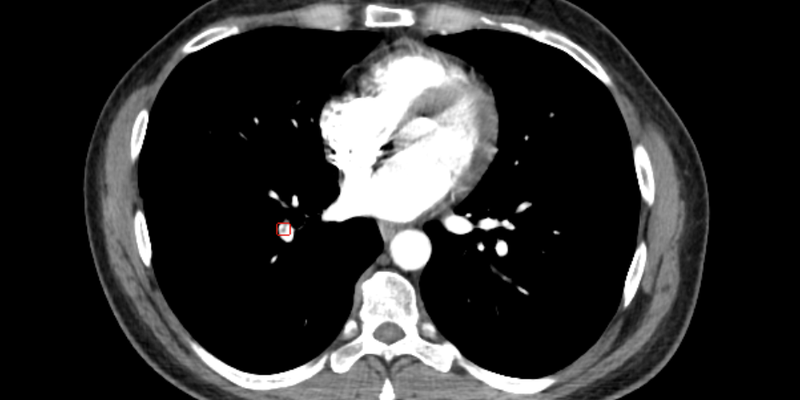
Company: Avicenna.ai Product: CINA-PE
Performance and clinical utility of an artificial intelligence-enabled tool for pulmonary embolism detection
Musculoskeletal and Emergency Imaging, 2024
Abstract
Purpose
Diagnosing pulmonary embolism (PE) is still challenging due to other conditions that can mimic its appearance, leading to incomplete or delayed management and several inter-observer variabilities. This study evaluated the performance and clinical utility of an artificial intelligence (AI)-based application designed to assist clinicians in the detection of PE on CT pulmonary angiography (CTPA).
Patients and methods
CTPAs from 230 US cities acquired on 57 scanner models from 6 different vendors were retrospectively collected. Three US board certified expert radiologists defined the ground truth by majority agreement. The same cases were analyzed by CINA-PE, an AI-driven algorithm capable of detecting and highlighting suspected PE locations. The algorithm's performance at a per-case and per-finding level was evaluated. Furthermore, cases with PE not mentioned in the clinical report but correctly detected by the algorithm were analyzed.
Results
A total of 1204 CTPAs (mean age 62.1 years ± 16.6[SD], 44.4 % female, 14.9 % positive) were included in the study. Per-case sensitivity and specificity were 93.9 % (95%CI: 89.3 %–96.9 %) and 94.8 % (95%CI: 93.3 %–96.1 %), respectively. Per-finding positive predictive value was 89.5 % (95%CI: 86.7 %–91.9 %). Among the 196 positive cases, 29 (15.6 %) were not mentioned in the clinical report. The algorithm detected 22/29 (76 %) of these cases, leading to a reduction in the miss rate from 15.6 % to 3.8 % (7/186).
Conclusions
The AI-based application may improve diagnostic accuracy in detecting PE and enhance patient outcomes through timely intervention. Integrating AI tools in clinical workflows can reduce missed or delayed diagnoses, and positively impact healthcare delivery and patient care.
Read full study